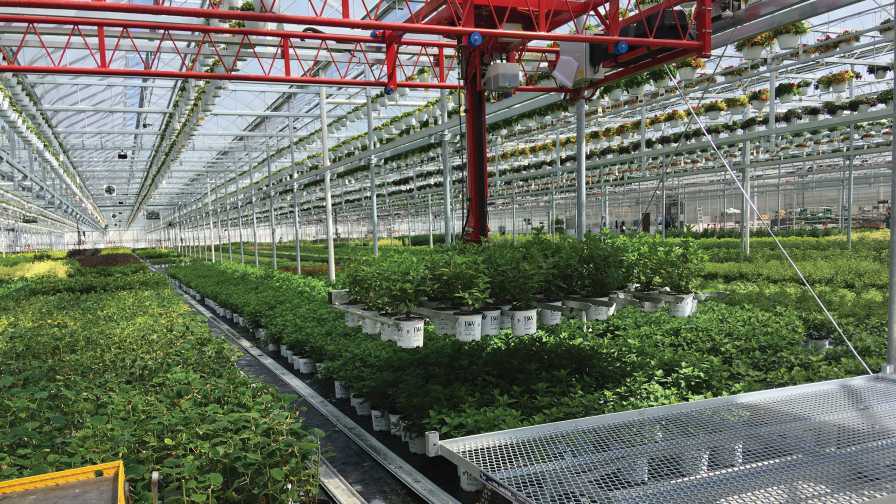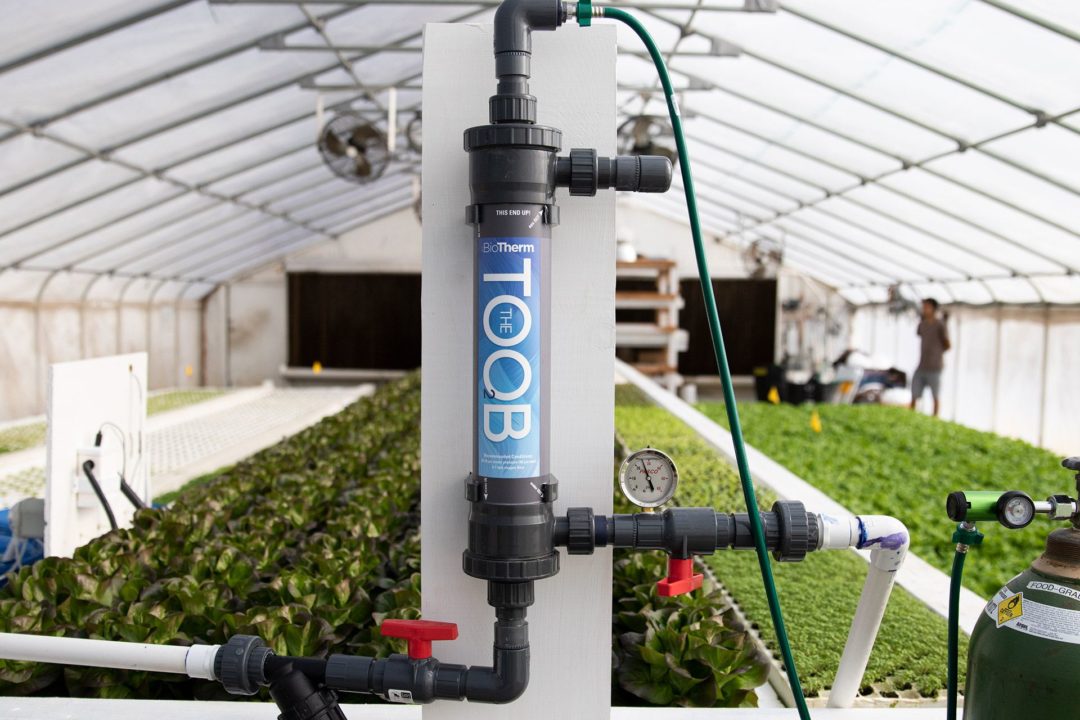How to Pencil Out Technology Upgrades in Your Greenhouse

One reason growers upgrade their greenhouse technology by investing in automation is to reduce stoop labor, such as moving pots.
Photo courtesy of AgriNomix.
Budgeting for greenhouse technology upgrades would be easier if cash sprouted from flats instead of perennials. The financials need not be a mystery, whether you’re upgrading your greenhouse’s irrigation, automation, or the structure itself.
Before any upgrade, ask yourself: Is upgrading technology right for my operation? Having the right mindset to embrace what can be an expensive yet effective solution is crucial.
But if you’re in short-term survival mode, investing in upgrades might not be the right move.
First, look at your profit and loss (P&L) statement. Identify significant cost items in your direct costs, labor, and overhead, says Dr. Paul Fisher, Professor of Floriculture at the University of Florida.
What’s really limiting your operation in terms of total production? In many cases, it’s labor.
“Adopt a piece of technology based on your own analysis of costs and benefits, and not just an effective salesperson,” Fisher says. “Seek advice from other growers and university experts.”
Why the Upgrade?
Start with defining the goal. What’s the purpose of the upgrade? Perhaps you need to change your greenhouse’s lighting for a new crop. Maybe it’s required for safety compliance. Or it could be anticipated maintenance.
Labor — specifically the shortage and price of it — is currently the prevailing motivation for growers to make upgrades. (Plus, adding technology can help you attract skilled workers, as noted by Rob Lando of AgriNomix in an article you can find on GreenhouseGrower.com.
Next, figure out your payback method: return on investment (ROI) or payback period. What’s the difference between them?
A payback period is the time it takes for an investment to pay for itself, or the break-even point. The shorter the payback period, the better. But it doesn’t account for the time value of money.
In 2013, for example, Hoffman Nursery bought a SuperCut grass trimmer that paid for itself in 34 weeks after calculating how much time and labor it saved.
“Not bad for an $8,000 investment,” says Jill Hoffman, Co-Owner of Hoffman Nursery.
If that payback period had been 20 weeks, it could be considered an even better investment.
A net present value ROI accounts for the time value of money. You can decide if an upgrade is worthwhile by examining all the money you expect to make from it and translating future cash flows into today’s dollars. This provides an actual number that growers can use to compare the efficiency of investments.
Texas A&M’s Charlie Hall teaches the net present value method in his Executive Academy for Growth & Leadership (EAGL) program. It can be applied to any greenhouse technology upgrade.
Hoffman has traditionally used the payback period for upgrades. But in the future, Jill Hoffman says the company will be using the net present value method to get a better handle on whether to move forward with a project or not.
Here are some areas where growers are upgrading technology.
Automation
Before you invest or upgrade automation, whether it’s an infeed conveyor, flat filler, or plug popper, think long term, says Jack Ford, Vice President of Sales at AgriNomix, Oberlin, OH.
“The ROI goal in the past tended to be three to five years or less,” he says. “With the current climate, growers are happy with an eight-year or less goal. That is being driven by availability and increasing cost of labor.”
That means growers are willing to have a slower ROI if they get their jobs done with fewer people. Ford says material handling automation upgrades are most in demand.
Based on your goals, know your current rate of production and have a budget prepared. The more information you have about your operation, the more cost-effective an automation upgrade will be.
Boom Irrigation Controllers
Irrigation controllers are among the most common upgrades growers will make. The irrigation system many growers know is a circuit board controller with a keypad and screen for controlling each boom.
Upgrading to a touch irrigation controller (TIC) is a relatively easy boost for growers, says Nathan Van Wingerden, Sales Manager at Cherry Creek Systems in Colorado Springs, CO. With WiFi connectivity, the TICs can control all the booms, plus their scheduling, from one interface.
“Most of the immediate payback is on labor savings,” Van Wingerden says. “We’ve estimated a typical ROI of six months to a year. It pays for itself very quickly.”
An automated irrigation system will provide consistent, uniform watering, thus improving the quality of your plants.
Greenhouse Environment
Technology upgrade possibilities within greenhouses themselves are ample. Improvements depend on the grower, the size of their operation, and crop.
Stuppy Greenhouse Manufacturing President Matt Stuppy says the driving force on many recent upgrades involves having better environmental control associated with crop changes. That encompasses controllers, lighting, shade systems, and more.
Growers should consider current and future labor costs of production and maintenance when creating a realistic budget.
“Rarely does anyone say, ‘I have this much money. What greenhouse improvement can I get for this?’” Stuppy says. Upgrades are driven by crops, and require iterative, multiyear planning.
Take the same shrewd approach to software, material handling, and any other aspect of your production. Keep in mind rebates, grants, and tax advantages that could offset the cost when deciding when to upgrade your greenhouse technology.








